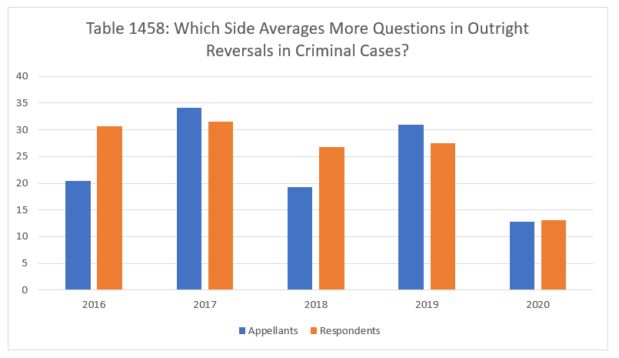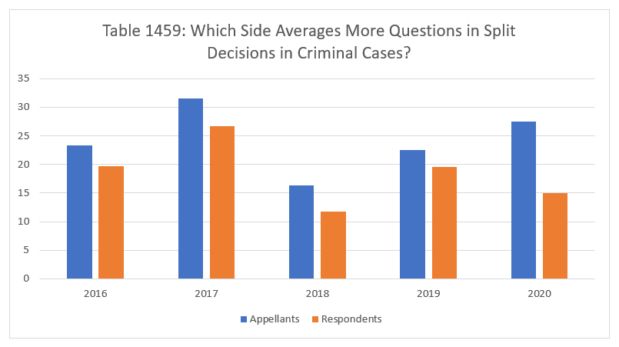Now we turn to the data for the criminal docket. In outright reversals, respondents averaged more questions than appellants in three of five years between 2016 and 2020 – 2016, 2018 and 2020.

We mentioned in a previous post that there was some indication – notwithstanding the tiny data sets – that partial reversals might have an unexpected impact on the question patterns. Turning to split decisions in criminal cases, we find that appellants average more questions in all five years between 2016 and 2020.

Join us back here next Thursday as we turn our attention to further oral argument data.
Image courtesy of Flickr by Ian Sane (no changes).
Originally published by California Supreme Court Review
The content of this article is intended to provide a general guide to the subject matter. Specialist advice should be sought about your specific circumstances.

